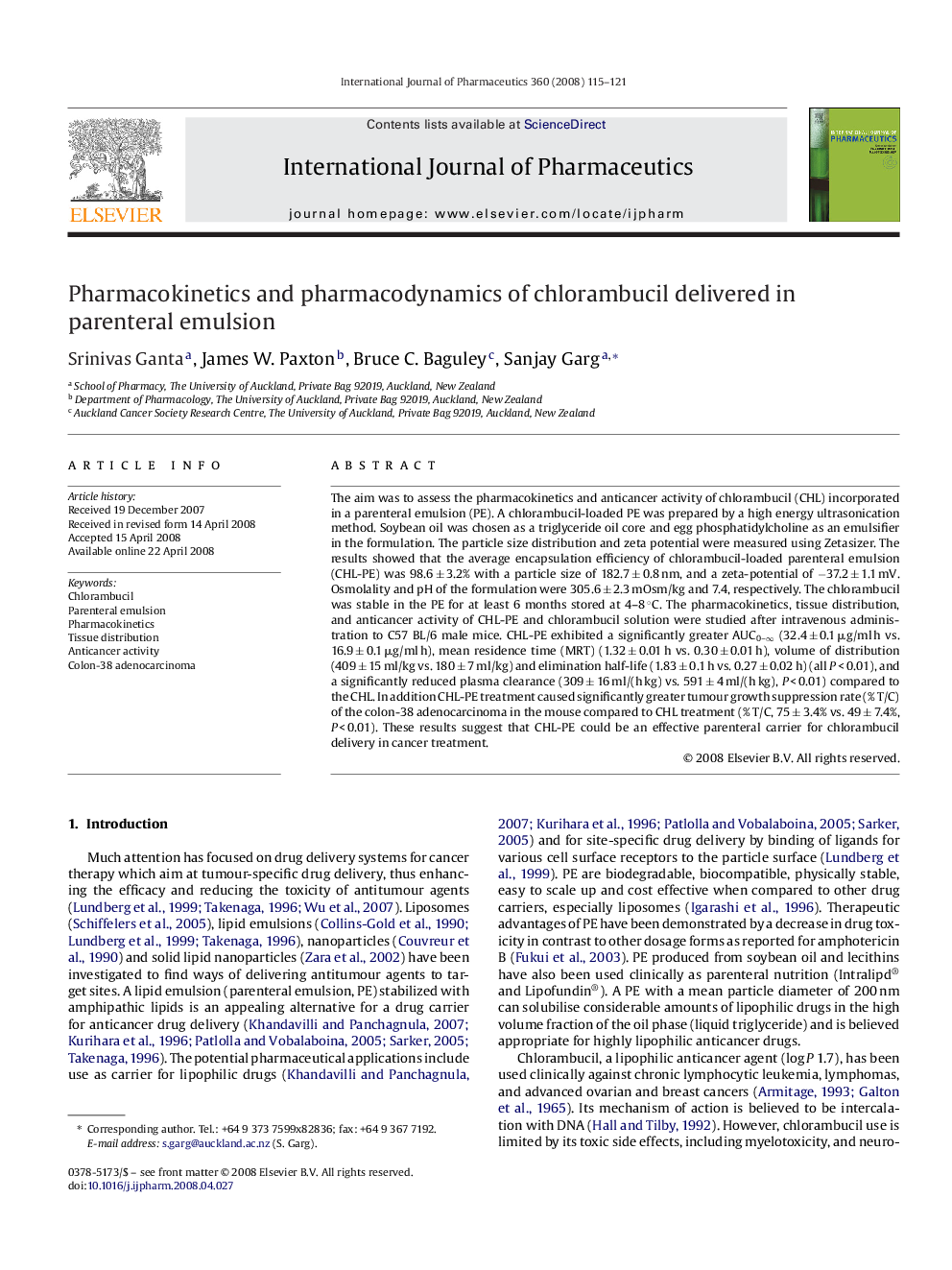| Article ID | Journal | Published Year | Pages | File Type |
|---|---|---|---|---|
| 2505101 | International Journal of Pharmaceutics | 2008 | 7 Pages |
The aim was to assess the pharmacokinetics and anticancer activity of chlorambucil (CHL) incorporated in a parenteral emulsion (PE). A chlorambucil-loaded PE was prepared by a high energy ultrasonication method. Soybean oil was chosen as a triglyceride oil core and egg phosphatidylcholine as an emulsifier in the formulation. The particle size distribution and zeta potential were measured using Zetasizer. The results showed that the average encapsulation efficiency of chlorambucil-loaded parenteral emulsion (CHL-PE) was 98.6 ± 3.2% with a particle size of 182.7 ± 0.8 nm, and a zeta-potential of −37.2 ± 1.1 mV. Osmolality and pH of the formulation were 305.6 ± 2.3 mOsm/kg and 7.4, respectively. The chlorambucil was stable in the PE for at least 6 months stored at 4–8 °C. The pharmacokinetics, tissue distribution, and anticancer activity of CHL-PE and chlorambucil solution were studied after intravenous administration to C57 BL/6 male mice. CHL-PE exhibited a significantly greater AUC0–∞ (32.4 ± 0.1 μg/ml h vs. 16.9 ± 0.1 μg/ml h), mean residence time (MRT) (1.32 ± 0.01 h vs. 0.30 ± 0.01 h), volume of distribution (409 ± 15 ml/kg vs. 180 ± 7 ml/kg) and elimination half-life (1.83 ± 0.1 h vs. 0.27 ± 0.02 h) (all P < 0.01), and a significantly reduced plasma clearance (309 ± 16 ml/(h kg) vs. 591 ± 4 ml/(h kg), P < 0.01) compared to the CHL. In addition CHL-PE treatment caused significantly greater tumour growth suppression rate (% T/C) of the colon-38 adenocarcinoma in the mouse compared to CHL treatment (% T/C, 75 ± 3.4% vs. 49 ± 7.4%, P < 0.01). These results suggest that CHL-PE could be an effective parenteral carrier for chlorambucil delivery in cancer treatment.
